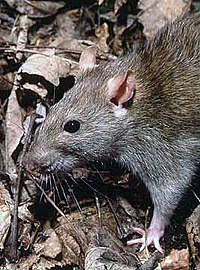
Photo from wikipedia
Desert ecosystems are one of the fastest urbanizing areas on the planet. This rapid shift has the potential to alter the abundances and species richness of herbivore and plant communities.… Click to show full abstract
Desert ecosystems are one of the fastest urbanizing areas on the planet. This rapid shift has the potential to alter the abundances and species richness of herbivore and plant communities. Herbivores, for example, are expected to be more abundant within urban desert remnant parks located within cities due to anthropogenic activities that concentrate food resources and reduce native predator populations. Despite this assumption, previous research conducted around Phoenix, AZ, USA has shown that top-down herbivory led to equally reduced plant biomass in both urban and outlying locations. It is unclear if this insignificant difference in herbivory at urban and outlying sites is due to unaltered desert herbivore populations or altered activity levels that counteract abundance differences. Small rodent herbivore/granivore populations were surveyed at four sites inside and four sites outside of the core of Phoenix during fall 2014 and spring 2015 in order to determine whether abundances and richness differ significantly between urban and rural sites. In order to survey species composition and abundance at these sites, 100 Sherman traps and eight larger wire traps that are designed to attract and capture small vertebrates such as mice, rats, and squirrels were set at each site for two consecutive trap nights. Results suggest that the commonly assumed effect of urbanization on herbivore abundances does not apply to small rodent populations in a desert city, as overall small rodent abundances were statistically similar regardless of location. Though a significant difference was not found for species richness, a significant difference between small rodent genus richness at these sites was observed, with altered community composition. The compositional differences likely reflect the altered vegetative community and may impact ecological interactions at these sites.
Journal Title: PeerJ
Year Published: 2018
Link to full text (if available)
Share on Social Media: Sign Up to like & get
recommendations!